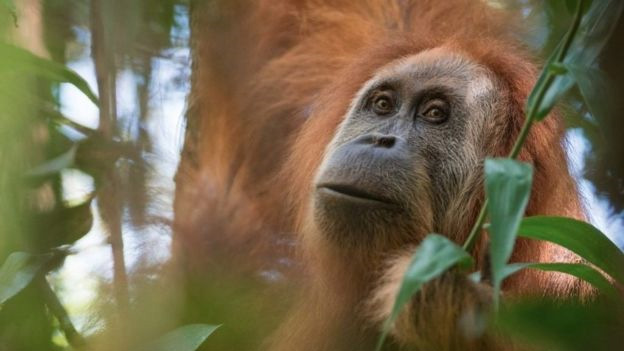
Everyone has heard of orangutans. The Red Ape, the Old Man of the Forest; the poster child for shrinking Indo-Malayan rainforests. But less people are aware that since 2001, there have been two recognized orangutan species: the Bornean (Pongo pygmaeus) and the Sumatran (P abelii). And a study published earlier this year has revealed something that until recently, nobody knew about: A third orangutan species, the Tapanuli Orangutan (P. tapanuliensis).
The first signs of a new species came when a DNA analysis of over 30 orangutans from across Indonesia found that the genetic code of a population from the Tapanuli region of Northern Sumatra differed from that of other Sumatran Orangutans. A closer examination of the code found that they had split from each around 700,000 years ago. Subtle differences in mating calls and skull shapes provided further evidence for the uniqueness of these orangutans, leading to scientists from the University of Zurich and the Sumatran Orangutan Conservation Programme to declare them a new species.
While the validity of this new species is currently being debated, what is depressingly clear is how close we are to losing it. There are thought to be less than 800 Tapanuli Orangutans in the world, making it the rarest great ape species on earth. All of them live in a 1000 km² area already threatened by illegal hunting, deforestation, gold mining and now the looming possibility of a new hydroelectric power plant. For now, the Tapanuli Orangutan is going on the IUCN’s Critically Endangered list. But it should also be listed as yet another reason why we must act now to cut our palm oil consumption and save Southeast Asia’s unique rainforests.
Sources:
- BBC: http://www.bbc.com/news/science-environment-41848816
- Guardian: https://www.theguardian.com/science/2017/nov/02/new-species-of-orangutan-discovered-in-northern-sumatra-tapanuli-pongo-tapanuliensis
Thomas Gomersall, Masarang HK Volunteer
Leave a Reply